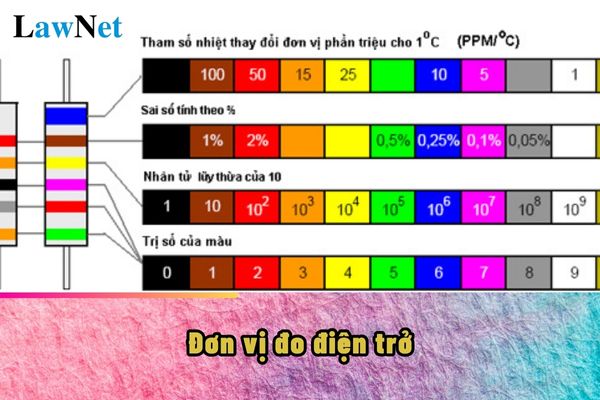What is the unit of measurement for electrical resistance? When do students in Vietnam learn about electrical circuits and resistance?
What is the unit of measurement for electrical resistance?
The unit of measurement for electrical resistance is one of the topics that students will learn in the physics subject.
Students can refer to the content regarding electrical resistance as follows:
|
What is the unit of measurement for electrical resistance? The Ohm is a fundamental unit in the international SI measurement system used to measure the level of hindrance for electric current running through a conductor. In other words, the larger the resistance, the more difficult it is for the electric current to pass. |
Note: The information is for reference only./.

What is the unit of measurement for electrical resistance? When do students in Vietnam learn about electrical circuits and resistance? (Image from the Internet)
When do students in Vietnam learn about electrical circuits and resistance?
Based on Section 4 of the General Education Curriculum for Physics issued with Circular 32/2018/TT-BGDDT on the content in the physics program for Grade 11:
Electric Circuits and Resistance
- Define resistance, identify the unit of measurement for resistance, and state the main causes of resistance.
- Sketch and discuss the I - U characteristic curve of a metal conductor at a specific temperature.
- Briefly describe the influence of temperature on the resistance of a filament bulb and thermistor.
- State Ohm’s law for metal conductors.
- Define electromotive force through the energy displacement of a unit charge in a closed loop.
- Describe the effect of the internal resistance of a power source on the voltage between the two poles of the source.
- Compare electromotive force and voltage.
- Discuss and design or select an approach, implement the approach, and measure electromotive force and internal resistance of a battery or accumulator using practical tools.
Therefore, according to the above regulations, students in Vietnam will learn about electric circuits and resistance in the physics program for Grade 11.
What are the perspectives on building Physics program according to 2018 general education curriculum in Vietnam?
According to Section 2 of the General Education Curriculum for Physics issued with Circular 32/2018/TT-BGDDT, the perspectives on building Physics program according to 2018 general education curriculum in Vietnam are as follows:
The Physics curriculum fully incorporates the fundamental regulations stated in the overall program, including perspectives, objectives, requirements to be achieved, educational plans, educational content, educational methods and result evaluation, conditions for implementation and curriculum development; orientations for building subject curricula and educational activities; and emphasizes several perspectives:
(1). The Physics subject curriculum both inherits and promotes the advantages of the current program while also embracing experiences from the subject curricula of countries with advanced education systems worldwide, and simultaneously approaches educational and physics scientific achievements suitable to the cognitive level, psychology, and physiology of students, taking into account Vietnam's economic and social conditions.
(2). The Physics subject curriculum focuses on the nature and physical significance of the objects, emphasizes practicality; avoids the trend towards leaning on mathematics; creates conditions for teachers to assist students in developing scientific thinking from a physical perspective, instilling interest in students, and enhancing the ability to apply physics knowledge and skills in practice.
The topics are designed and arranged from concrete to abstract, from simple to complex, from systems viewed as a single particle to multiple particles; initially approaching several modern, practical, and core contents.
(3). The Physics subject curriculum is designed openly, showing that it does not prescribe detailed teaching content but only specifies the requirements students need to achieve; it only provides specific definitions for concepts in case there are different understandings.
Based on the required achievements, textbook authors are proactive and creative in implementing specific teaching content according to curriculum development requirements.
On the basis of closely following the objectives and meeting the required achievements of the Physics curriculum, teachers can select, use one or combine multiple textbooks, and various sources of materials for teaching.
In a class, the order of teaching topics (including compulsory topics and optional specialties) is not statically fixed. Textbook authors and teachers can creatively arrange them as long as it does not disrupt the logical formation of knowledge, skills, and does not limit opportunities for forming and developing students' qualities and abilities.
The order of teaching topics should be executed so that the topic describing the physical phenomenon is presented first to provide an overall picture of the phenomenon, followed by the topic that explains and researches the phenomenon to provide a deeper physical basis, and then the topic of the application of that phenomenon in science or practice.
(4). The educational methods of the Physics subject contribute to promoting the proactivity, initiative, and creativity of learners, aiming to form and develop physics competence as well as contribute to the formation and development of the common qualities and abilities stipulated in the overall program.

